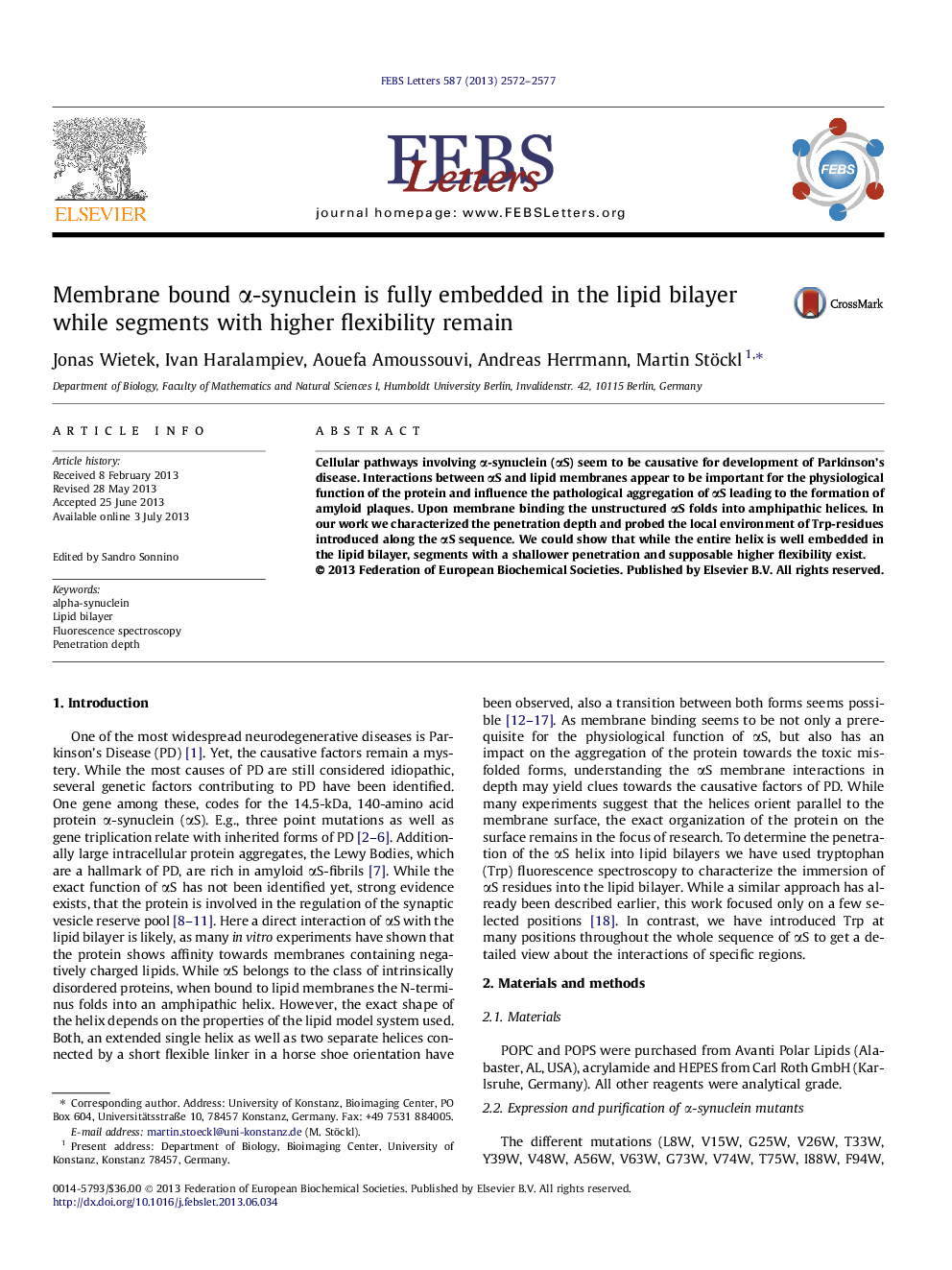| Article ID | Journal | Published Year | Pages | File Type |
|---|---|---|---|---|
| 10871185 | FEBS Letters | 2013 | 6 Pages |
Abstract
Cellular pathways involving α-synuclein (αS) seem to be causative for development of Parkinson's disease. Interactions between αS and lipid membranes appear to be important for the physiological function of the protein and influence the pathological aggregation of αS leading to the formation of amyloid plaques. Upon membrane binding the unstructured αS folds into amphipathic helices. In our work we characterized the penetration depth and probed the local environment of Trp-residues introduced along the αS sequence. We could show that while the entire helix is well embedded in the lipid bilayer, segments with a shallower penetration and supposable higher flexibility exist.
Related Topics
Life Sciences
Agricultural and Biological Sciences
Plant Science
Authors
Jonas Wietek, Ivan Haralampiev, Aouefa Amoussouvi, Andreas Herrmann, Martin Stöckl,
